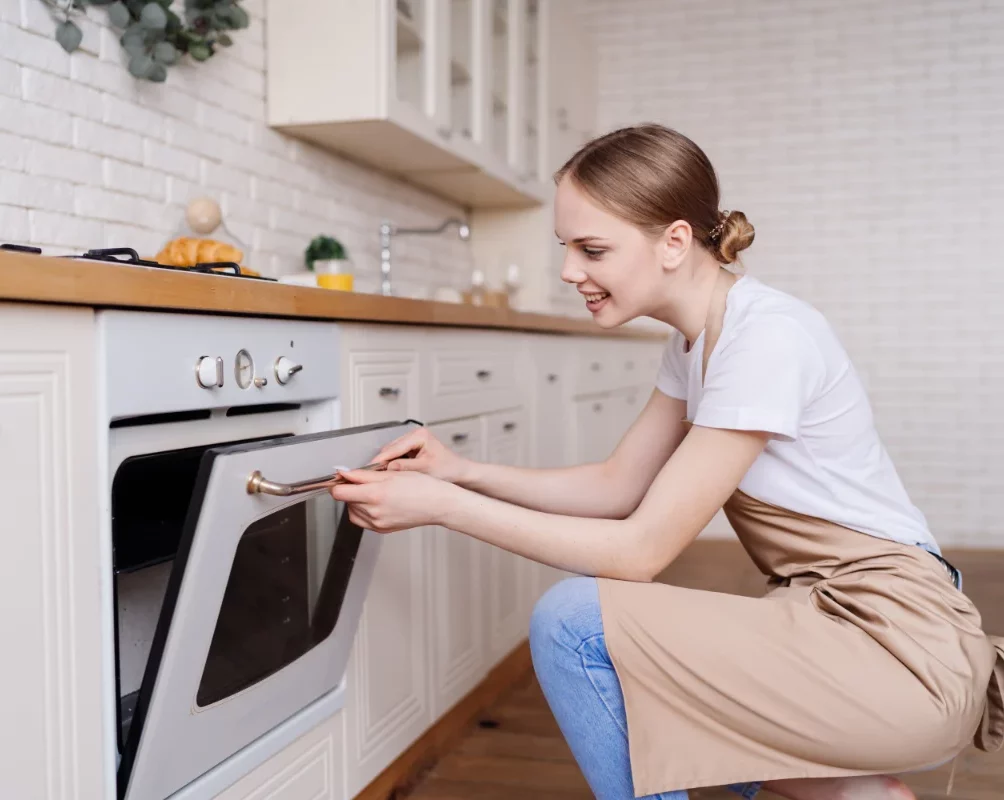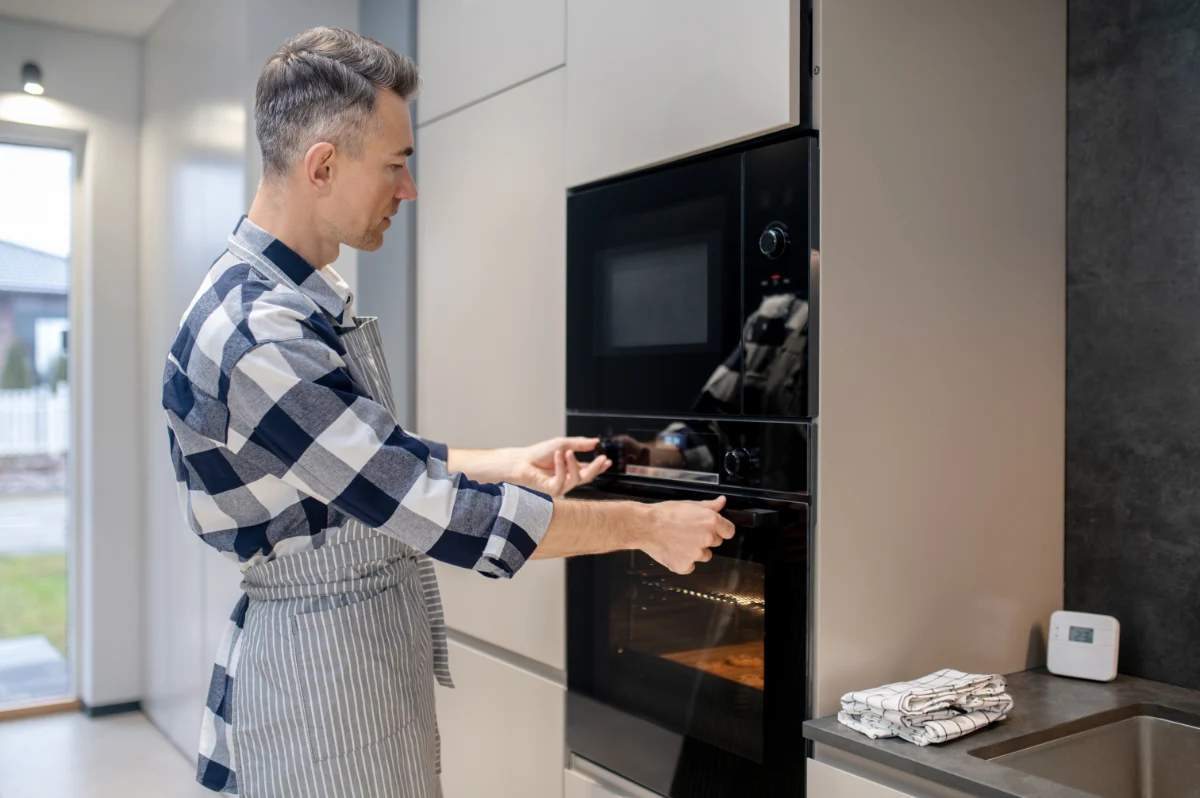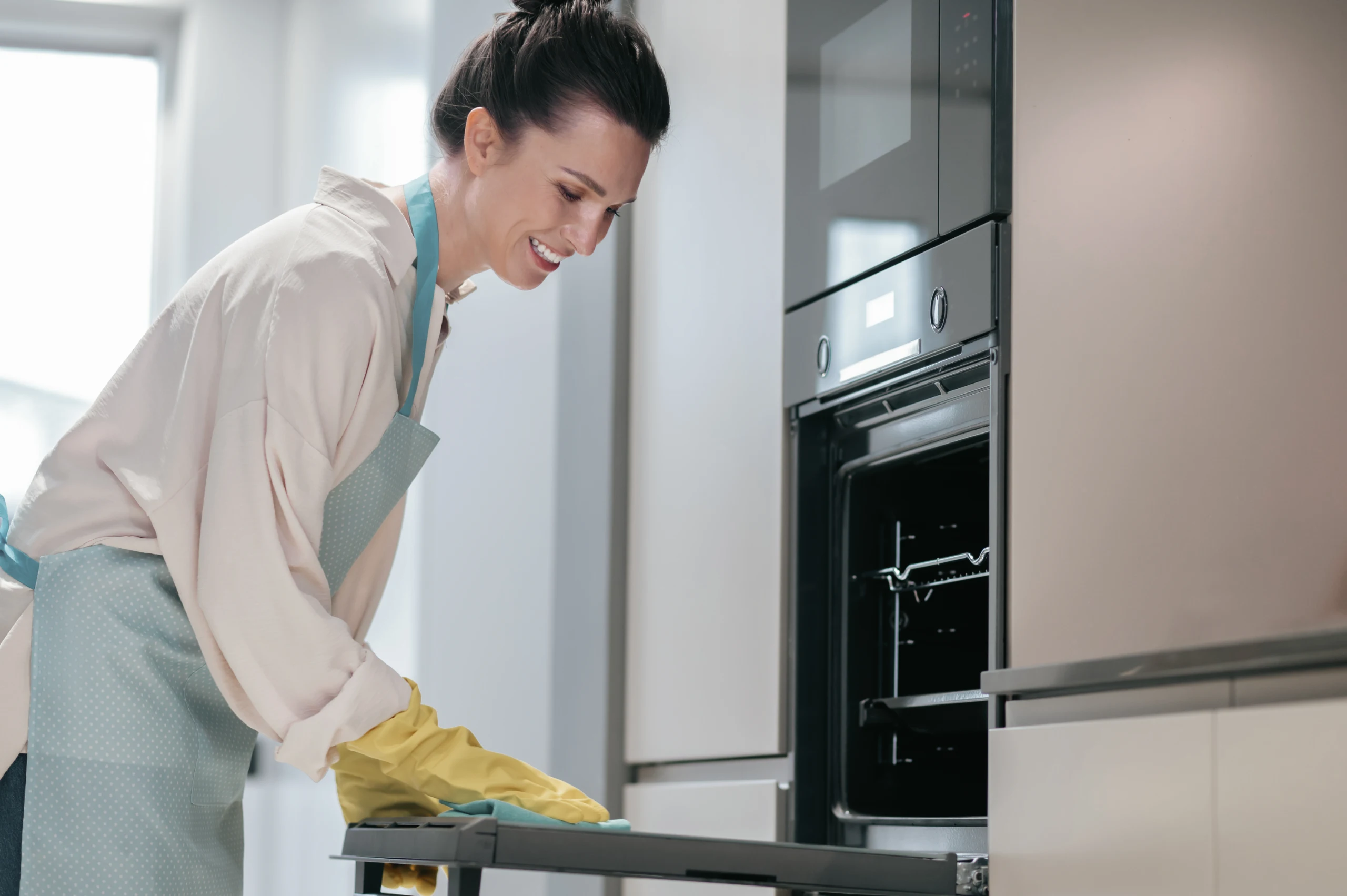If you’re tired of spending hours scrubbing your oven to remove stubborn grease and grime, a self-cleaning oven might seem like an attractive solution. But are self-cleaning ovens truly worth the investment? Cleaning the oven is a dreaded chore for many homeowners. The buildup of food residue and grease can be challenging to remove, requiring harsh chemicals and intensive scrubbing. Self-cleaning ovens offer a convenient solution by automating the cleaning process. But let’s examine how these ovens work before delving into their pros and cons.
How Does Self-Cleaning Oven Work?
Self-cleaning oven employs a feature called pyrolytic cleaning. During the self-cleaning cycle, the oven heats up to an extremely high temperature, typically between 470-500°C or 880-900°F.
This intense heat turns any food residue inside the oven into ash, which can be easily wiped away after the cycle is complete. It is also important to note that the oven door will lock during the cleaning process, and the entire oven, including the door, will become very hot and should not be touched.

Advantages of Self-Cleaning Ovens
Disadvantages of Self-Cleaning Ovens
Common Issues with Self-Cleaning Ovens
While this type of ovens are generally reliable, they may occasionally experience issues. Here are some common problems you may encounter:
- Incomplete Cleaning: In some cases, self-cleaning cycles may not completely remove all stains and residues. In such instances, manual cleaning may still be required.
- Faulty Locking Mechanism: The door locking mechanism can sometimes malfunction, preventing the self-cleaning cycle from starting. Consult a professional technician if you experience this issue.
- Error Codes: Like any complex appliance, this ovens may display error codes due to various malfunctions. Refer to the oven’s manual or contact the manufacturer for troubleshooting guidance if you face any.

Are-Self Cleaning Ovens Safe?
As you consider using a self-cleaning oven feature, you might wonder whether self-cleaning ovens are safe or not. Although these modern pieces of equipment can make your life easier to a large extent, there are certain risks and self-cleaning oven dangers you have to consider.
Release of Toxic Fumes
Many self-cleaning ovens can generate and emit carbon monoxide into the kitchen and home. Self-cleaning ovens achieve high temperatures and emit fumes as food particles and the enamel lining burn. These harmful substances can greatly affect the quality of the air and the well being of individuals who inhale it in that area. If you want to avoid the self-cleaning oven dangers, make sure your home is sufficiently ventilated during the procedure.
Fire Hazards
Self-cleaning ovens can cause fires. Even if all large food particles are eliminated prior to washing, the temperature rises to dangerous levels. At such temperatures, anything left on top of the oven can soon ignite, triggering a fire and potentially disastrous results. Make sure to inspect the surroundings of your oven before starting the cleaning process.

Children and Pets Safety
When the oven is in self-cleaning mode, young children are at risk of burns. Children should never be left unmonitored during cleaning since the front of the oven becomes quite hot. Gasses produced during the cleaning cycle of the oven might be dangerous to the health of pets in your home. If you notice your pet acting unusual while using your oven’s self-cleaning option, this could be an indication of Polytetrafluoroethylene toxicosis. Try to place your pets outside or in a well-ventilated room far away from the kitchen to protect them from self-cleaning oven dangers.
Upgrade to a Self-Cleaning Oven and Experience Convenience, Savings, and Safety
Self-cleaning ovens offer convenience and time savings by automating the oven-cleaning process. They eliminate the need for manual scrubbing and reduce exposure to cleaning fumes. Additionally, they can save energy and money in the long run. However, it’s important to consider the pre-cleaning requirements and the potential release of toxic fumes. If you decide to invest in a self-cleaning oven, make sure to follow the manufacturer’s guidelines for safe usage and maintenance. Now if you are ready to upgrade to a self-cleaning oven or need reliable installation and oven repair services, contact us at Appliance Technician today and let our expert appliance repair service in & near Ottawa, handle all your appliance needs. Fill out the form below to schedule an appointment now!
How often should I use the self-cleaning feature?
The frequency of using the self-cleaning feature varies among oven manufacturers. Some recommend monthly usage to prevent debris buildup, while others suggest a maximum of six times a year to protect the oven from excessive wear and tear. Consult your oven’s instruction manual for specific recommendations.
Can self-cleaning oven clean the entire oven, including the door?
Yes, self-cleaning oven clean both the oven interior and the door. However, it’s important to note that the oven door will become extremely hot during the self-cleaning process and should not be touched until the oven has cooled down to a normal baking temperature.
Are self-cleaning ovens more energy-efficient than regular ovens?
Yes, self-cleaning ovens tend to be more energy-efficient than regular ovens due to their insulation and the optimization of the self-cleaning cycle. The insulation helps retain heat, reducing energy consumption.
Do I still need to wipe the oven after a self-cleaning cycle?
After the self-cleaning cycle, it is recommended to wipe the oven interior with a damp cloth to remove the ash residue that remains. This step ensures a clean and ready-to-use oven.
Are there alternative oven cleaning methods?
Yes, there are alternative oven cleaning methods that don’t involve self-cleaning features. Some options include using natural cleaners like baking soda and vinegar or using steam-cleaning ovens, which utilize lower heat and steam to loosen residue. However, it’s important to consider the effectiveness and potential drawbacks of these methods.

